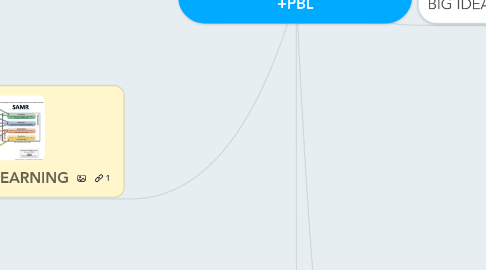
1. ICT REDFINES LEARNING
1.1. AMPLIFYING
1.1.1. CONNECTIONS
1.1.1.1. COLLABORATIVE LEARNING
1.1.1.2. CONNECTED LEARNING
1.1.2. VOICE and CHOICE
1.1.2.1. SELF-DIRECTED LEARNING
1.1.2.2. HEUTAGOGY
1.1.3. MULTIMODAL REPRESENTATIONS
1.1.3.1. PERFORMANCES of UNDERSTANDING
1.1.3.2. FLEXIBLE LEARNING PATHS
1.1.3.3. MAKING THINKING VISIBLE
1.2. REDEFINING EDUCATION
1.2.1. LEARNERS AS..
1.2.1.1. CONNECTORS
1.2.1.1.1. A 'Choose Your Own Adventure Story' Using Twine
1.2.1.2. CREATORS
1.2.1.2.1. PIXTON COMIC STORY: POW's Experience
1.2.1.2.2. Voicethread Recording: Perspectives of War
1.2.1.2.3. BLACKOUT POETRY USING SKITCH
1.2.1.3. CO-CONSTRUCTORS of Curriculum
1.2.1.3.1. Trading Card Game For To Kill A Mockingbird
2. PROJECT-BASED LEARNING
2.1. QUESTION FOCUS STATEMENT
2.1.1. UNPACK PERSPECTIVES
2.1.1.1. REPRESENTATION
2.1.1.1.1. WHOSE VOICE
2.1.1.1.2. WHOSE PERSPECTIVE
2.1.1.1.3. DIFFERENT FRAMES
2.2. INQUIRY-BASED
2.2.1. DRIVING QUESTIONS
2.2.1.1. GENERATE ESSENTIAL QUESTIONS
2.2.1.1.1. ORGANISING / CATEGORIZING QUESTIONS
2.2.1.1.2. OPENING UP thinking
3. Essential Questions & Enduring Understandings
3.1. INTEGRATION
3.1.1. Enduring Understandings
3.1.1.1. RELEVANCE beyond school
3.1.1.2. Cuts across disciplinary Boundaries
3.1.1.2.1. TRANSFERRABLE
3.2. Design involves textual representations of people, places, events and ideas that reflect the beliefs, choices, and positions of their desgners
3.2.1. How do TEXTS reflect the choices, positions and beliefs of their creators?
3.2.1.1. HISTORY
3.2.1.1.1. RELIABILITY
3.2.1.1.2. CREDIBILITY
3.2.1.2. LITERATURE
3.2.1.2.1. EMPATHY
3.2.1.2.2. Discrimination
3.2.1.3. ENGLISH
3.2.1.3.1. Lenses
4. BACKWARD DESIGN
4.1. BIG IDEAS / CONCEPTS
4.1.1. ESSENTIAL QUESTIONS
4.1.1.1. DRIVING QUESTIONS
4.1.2. CENTRAL FOCUSING IDEAS
4.2. ENDURING UNDERSTANDINGS
4.2.1. Questions WORTH asking
4.2.1.1. Meaningful CONNECTIONS
4.2.1.2. PROVOCATIVE
4.2.1.3. ARGUABLE
5. BIG IDEAS / KEY CONCEPTS
5.1. AUDIENCE
5.2. CONTEXT
5.3. VOICE
5.3.1. Identit(ies)
5.4. Meaning making
5.4.1. Roles
5.4.2. Perspectives

